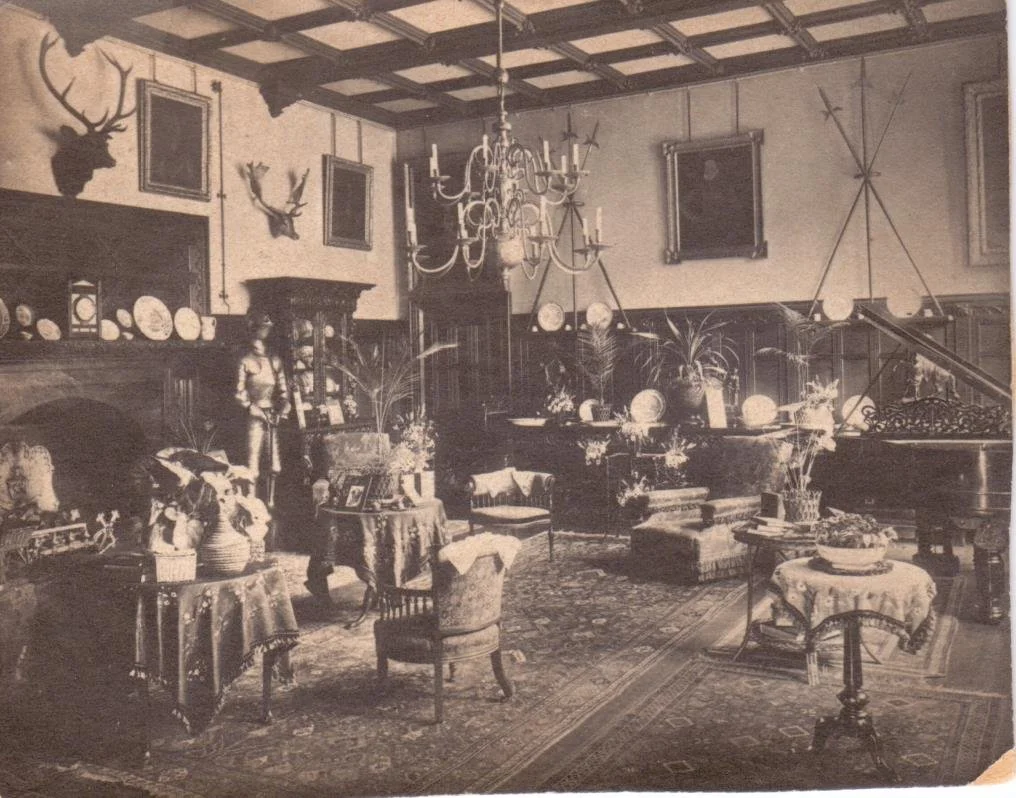Long Lasting Lord of the Manor
When the Dauntesey family moved out of Agecroft in the early 20th century, they took all of their belongings with them. As a result, the collection today, while authentically 16th and 17th century, was never part of Agecroft in England – with two notable exceptions: the estate’s archival documents dating back to the late 13th century and the portrait of one of Agecroft’s most important owners – William Dauntesey (1542?-1622). Today you can find him at the center of the house in the front hall where he greets visitors at the start of their tour.
In the portrait, William poses proudly in an elegantly tailored gold and white outfit. Atop his head is a black, beaver fur cap decorated with a jaunty ostrich feather and an antique cameo. In the upper left of the painting is the Dauntesey coat of arms and a Latin inscription naming the subject as the son of Richard Dauntesey. On the upper right is the date of the painting, 1566, and the subject’s age, 24. Together these visual clues allow us to identify William as a member of a wealthy wool merchant family in Wiltshire. The family also held property in London, Middlesex and Essex. His father, Richard was in service in the courts of Queens Jane Seymour and Katherine Howard and then in service to Lady Mary before and after she became Queen Mary I. Sadly, his father died in 1557 when William was only 15 years old.
So how did a wool merchant from Wilshire become lord of the manor at Agecroft in Lancashire?
For several centuries, Agecroft descended down through the Langley family, but Sir Robert Langley III (1506-1561) did not father a son to inherit his estate, considered a great misfortune in those days. At his death, his property was divided among his four daughters. Anne, his third daughter, inherited Agecroft and then married William Dauntesey sometime between 1561 and 1571. The marriage was noteworthy for two reasons. First, Anne’s sisters all married men from local gentry families, but Anne married someone whoo’d grown up out of the local area. Secondly, Anne was several years older than her husband. We do not know if the marriage was a love match, but it was certainly economically advantageous to join a woman with a wool producing estate to prosperous wool merchant. William’s success allowed him to enlarge the original manor house to the quadrangular format that stood in England for nearly 400 years.
Over the centuries, the portrait continued to be important to the Dauntesey family as evidenced by an 1886 photograph that that shows the portrait proudly hanging in the music room more than three centuries after his death. Admittedly, there was a brief 50 year period when the house and the portrait were separated in the first quarter of the 20th century, but luckily for us, Agecroft was able to reacquire the portrait from a Dauntesey family member Vivian Dauntesey in the early 1980s. Thus, for the majority of its 450+ year life, the portrait of William Dauntesey has been a silent reminder of the house’s heyday. Under William’s watchful gaze, Agecroft has grown, adapted to new technology, and even moved across an ocean.
Next time you are at Agecroft Hall, be sure to say hi to our Lord of the Manor.

